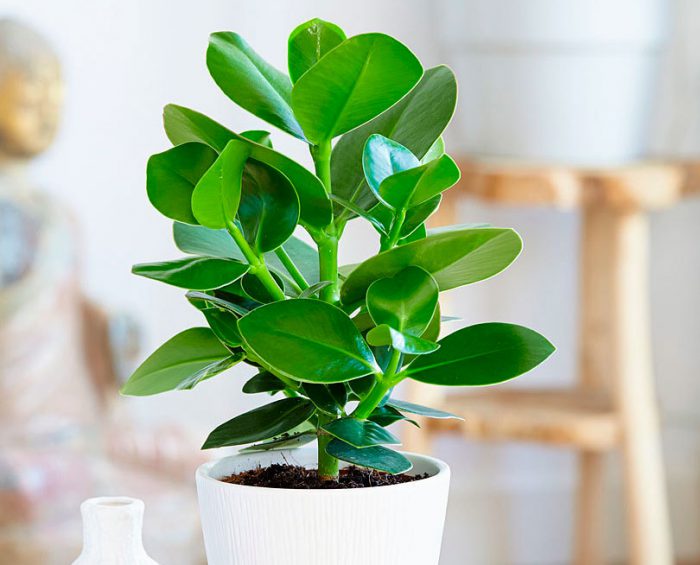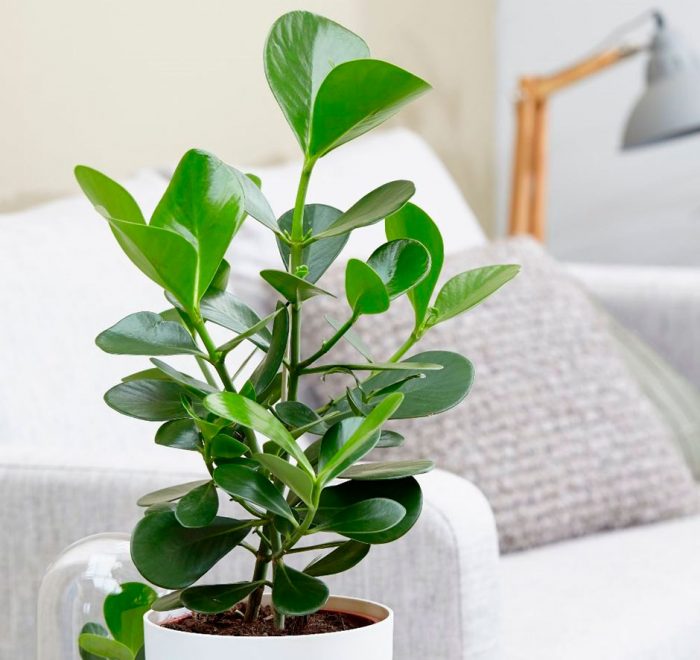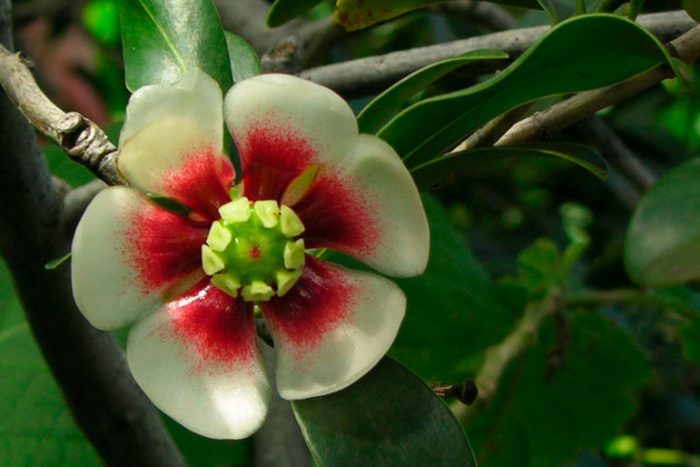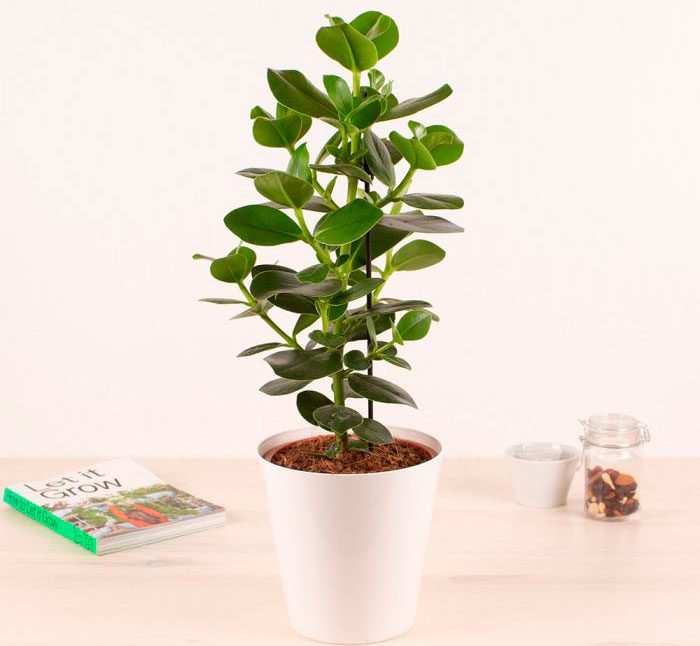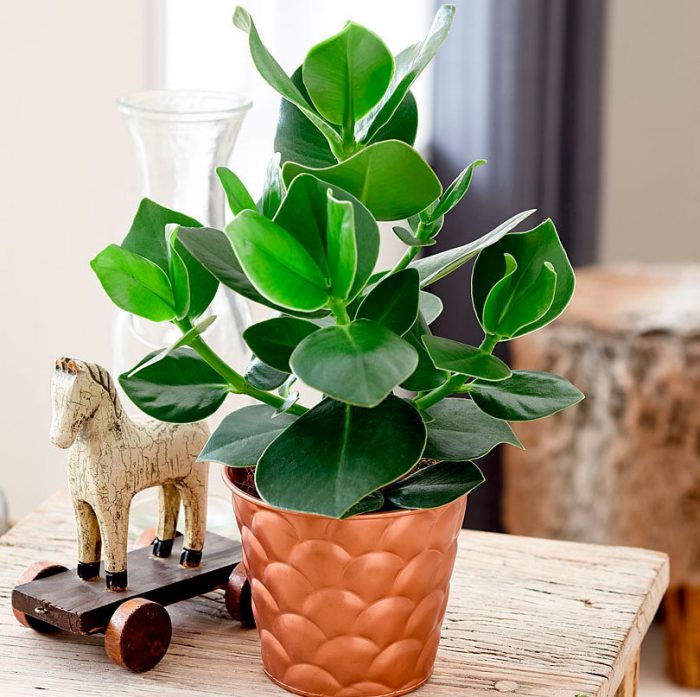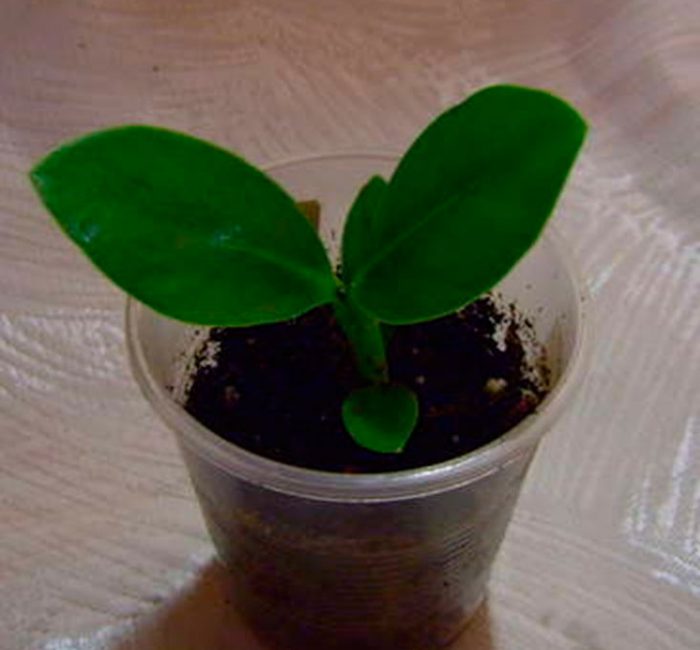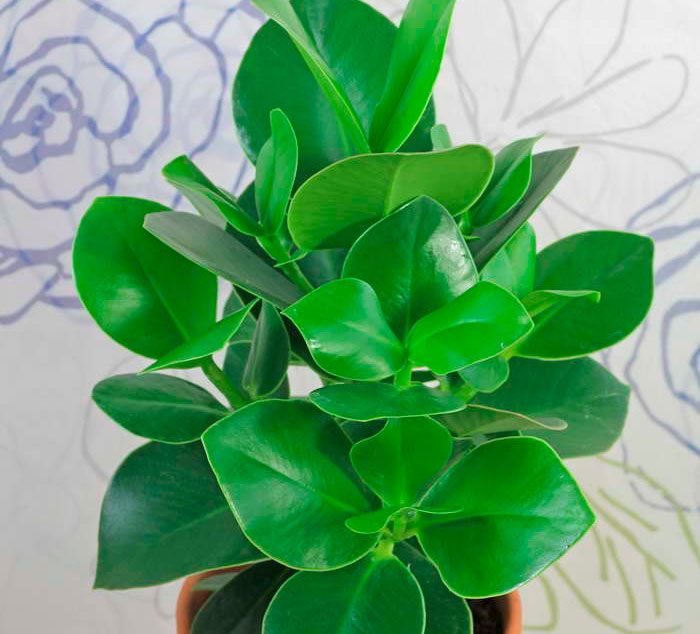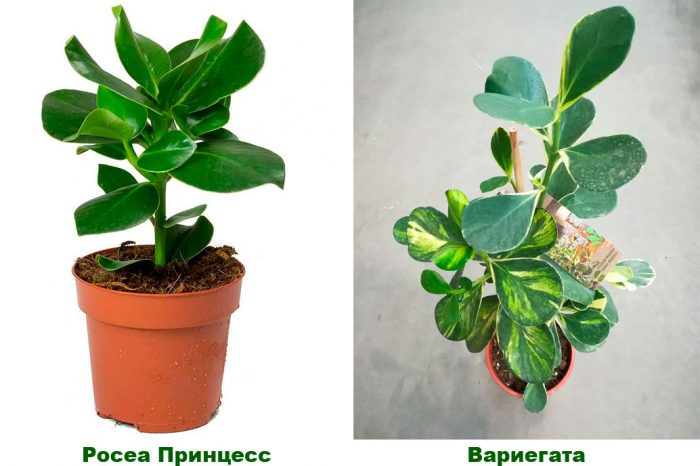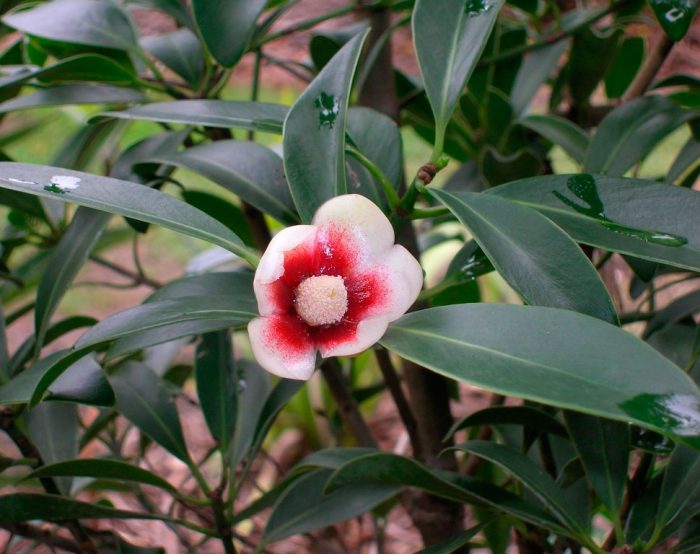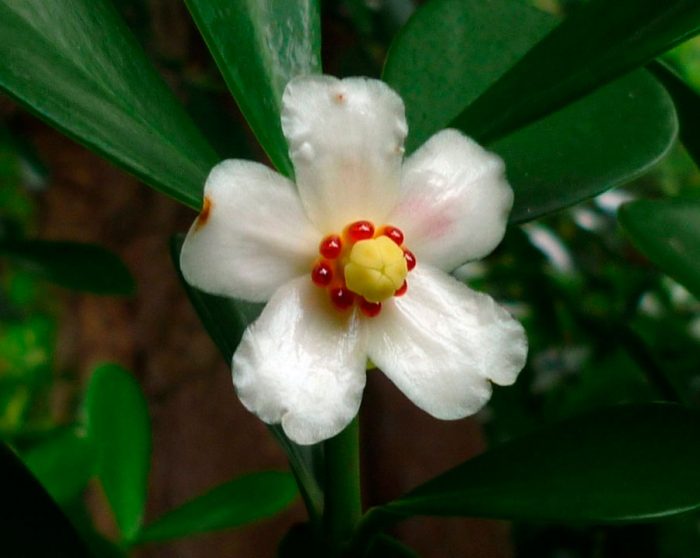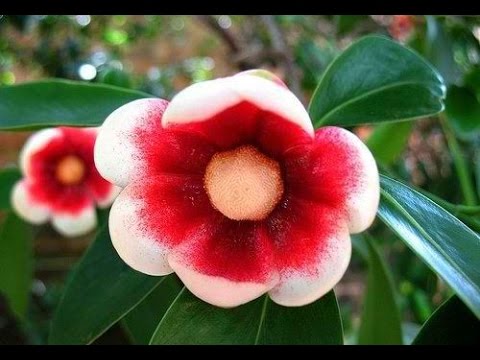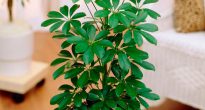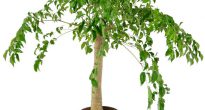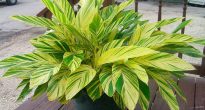The evergreen plant Clusia is a member of the Clusia family. According to data taken from various sources, this genus unites 150-300 species, while most of them can be found in the tropical regions of South America, but they also grow in North America. The name of the genus was given in honor of Karl Clusius (Charles de Lecluse), who was one of the most famous European botanists of the 16th century. Among the various types of clusies, there are those that can be cultivated at home.
Content
Brief description of cultivation
- Bloom... As a rule, clusia blooms in springtime.
- Illumination... The duration of daylight hours should be 12 hours, but in the afternoon, the bush must be protected from direct sunlight.
- Temperature regime... During the growing season - from 22 to 25 degrees, and during the rest period - from 18 to 20 degrees.
- Watering... The substrate is moistened not very often and in moderation, but they do this only after it dries 1/3 or 1/2 part in depth.
- Air humidity... On hot days and during the heating season, the bushes must be systematically moistened with warm water from a spray bottle.
- Fertilizer... The plant is fed from April to October 1 time in 15 days, for this they use a mineral complex fertilizer in a half dosage. During the cool wintering it is not fed.
- Dormant period... As a rule, it begins in late autumn and ends in the last winter weeks.
- Transfer... The bush is transplanted in the first spring weeks and only when its root system becomes very crowded in the container.
- Reproduction... Layering and cuttings.
- Diseases... Fungal infections.
- Harmful insects... Mealybugs, scale insects and spider mites.
- Properties... If the sap of the plant gets on the surface of the skin, it will cause irritation.
Features of the clusion
Clusia is represented by evergreen shrubs and not very tall trees, which are most often epiphytic. The seeds of this plant are carried by the wind or birds, after which they begin to germinate directly on the host plant, or rather, in the plexus of its branches. At the beginning, the epiphyte forms aerial roots, with the help of which it attaches to the bark of the host plant.After this, there is a gradual growth of the roots, after they reach the surface of the soil, they begin to strengthen in it. Over time, when the clusion grows, it begins to squeeze the host plant with its roots, and it dies.
Leaf plates leathery to the touch are glabrous and smooth, rich green in color, they are short-petiolate and opposite. The shape of the entire leaves can be oval or lanceolate, their top is pointed, their length can vary from 8 to 20 centimeters, and their width can vary from 5 to 8 centimeters. There are also small-leaved forms of this plant. Wax petals on flowers from 4 to 9, they have a whitish-green color with specks of yellow or pink. The flowers reach about 50 mm in diameter and have a very pleasant, but subtle scent. The opening of flowers occurs in the evening, while they close in the morning. The fruit is a round capsule, reaching 50–80 mm in diameter, its surface is covered with a greenish skin. The skin of the fruit becomes darker as it ripens, and then brown. It opens star-like, and inside it, a large number of seeds can be found in the red pulp. You cannot eat the fruit, and if the juice gets on the skin, then because of this, irritation may develop on it.
Clause care at home
Illumination
Clusia needs a long day of light (from 10 to 12 hours), while the light must be diffused. Remember that in the period from 12 to 16 hours direct rays of the sun should not fall on the foliage of the bush in any case. If the lighting is too scarce, then the internodes of the bush will become elongated, which will make its appearance painful and untidy. Best of all, at home, the clusia will grow on the east or west windowsill, but it can also be placed near the south window. In the autumn-winter period, as well as in early spring, in order to increase the length of daylight hours, you will need to install artificial lighting.
In order for the developing crown of the clusion to be symmetrical and grow evenly, regularly twice a month the container with the plant must be rotated 180 degrees around its axis.
Temperature regime
During the growing season, the plant feels best at an air temperature of 22 to 25 degrees, and during the dormant period, it is recommended to lower the air temperature to 20 degrees.
The room where the flower is located should be systematically ventilated, but it must be protected from drafts.
Watering
Watering should be moderate and fairly rare. It is necessary to moisten the soil mixture in the pot only after it dries out to a depth of 1/3 or 1/2 part. Remember that the water in the root system should never stagnate, as this has an extremely negative effect on the condition of the plant. The clusion should be watered only with well-settled for two days or with filtered water at room temperature. On hot summer days, as well as in winter, when the heating devices are working and the air is very dry, the foliage of the plant is moistened from a spray bottle with warm, well-settled or filtered water.
Fertilizer
Top dressing of the clusion is carried out only during the growing season from April to October, once every 15 days. To do this, use a solution of a universal mineral complex fertilizer, while taking half the dosage recommended by the manufacturer. During the dormant period, it is not necessary to feed the plant, but only during a cool winter. However, if both in summer and in winter the clusia is in similar conditions, then during the dormant period it is fed, but already once every 30 days.
Clusy transplant
Clusia reacts extremely painfully to transplantation, in this regard, it is carried out only when absolutely necessary by transshipment. This procedure is carried out only after the flower stops growing altogether. The new pot should be larger than the previous one, but not very high and with a wide bottom. First, make a drainage layer, which should be ¼ of the height of the container. Carefully transfer the bush into a new pot, taking it along with a lump of earth. All voids are covered with a fresh earthen mixture, for the preparation of which you can combine sand, leafy and garden soil (1: 1: 1) or peat, vermiculite, sand, coniferous and leafy soil (taken in equal parts). When the plant is transplanted, it needs to be watered. At first, it is protected from direct sunlight. After transplanting, the bush is not fed for at least 6 weeks.
Reproduction methods
Clusions grown indoors can be propagated by cuttings and layering.
Cuttings
Prepare the top cuttings by cutting off the tops of the shoots, which can vary in length from 15 to 20 centimeters. You can root them in clean water or by planting them in a mixture of sand and peat, do not forget to treat the sections with Kornevin or Heteroauxin before that. Cuttings root best of all at an air temperature of about 25 degrees, while on top they need to be covered with a cap, which should be transparent. The hood is needed so that the humidity level is always high. If done correctly, the cuttings will take root in about 30 days. After the length of the new roots is 10-15 mm, the cuttings are planted in pots, using the same soil mixture as for transplanting mature bushes (see above).
Layering
The filamentous air roots on the bush, which feed the plant in the same way as ordinary roots, gradually grow and become very dense. Once this happens, the aerial stem can be cut from the parent bush and planted in an individual container. For several days, the layers are shaded from direct sunlight. Further, he is provided with the same care as the adult clusion.
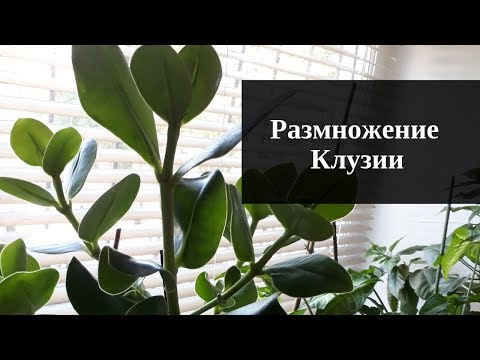

Watch this video on YouTube
Diseases and pests
Diseases
Clusia has a very high resistance to various diseases. However, if it is wrong to take care of her or not to provide her with suitable conditions for growth, then problems can arise with her. For example, if the bush does not have enough light, then yellowing and flying around of its foliage will begin. With regular stagnation of moisture in the substrate, fungal plaque forms on the surface of the leaf plates, due to which, over time, the plant begins to rot. At the first signs of a fungal infection of the bush, it is pulled out of the container and all decayed areas are cut out with a very sharp pre-sterilized tool, while necessarily capturing healthy tissue. Next, the clusion is planted in fresh soil mixture. Do not forget to adjust the watering regime to avoid rotting the plant again.
Harmful insects
Such harmful insects as mealybugs, scale insects and spider mites can settle on the clusion. All these insects are sucking, that is, they make punctures on the leaf plate and suck the juice out of it. Because of this, the wilting of the bush begins, as well as deformation of young shoots and foliage.
If worms or scale insects settle on a plant, then first they need to be removed from its surface using a cotton swab, which is pre-moistened in a soap solution or in alcohol. Then the bush is thoroughly washed with soapy water, while the surface of the substrate is protected with a film so that the soap solution does not get into it. After the clusion dries up, it is sprayed with an insecticidal solution.
Spider mites cannot be seen with the naked eye, as they are very small.They prefer to settle on the seamy surface of the leaf plates, where you can find the thinnest cobweb woven by such arachnids. In places of bites, small discolored dots form on the leaves, by which it is possible to determine the presence of pests on the plant. Rinse the clusion with a warm shower. If there are few pests, then one such procedure should be enough to get rid of them, since they prefer to live in a dry, warm place. If there are a lot of insects, then after a shower, spray the bush with an acaricide solution.
Types of clusions with photos and names
Large clusia (Clusia major)
Or pink clusia (Clusia rosea). This species began to be grown at home relatively recently. Such a compact upright plant, which is evergreen, is distinguished by undemanding care and maintenance conditions. Its height can reach up to 100 cm. All-edge large opposite leaf plates have a glossy and leathery surface to the touch. Each subsequent pair of leaves in relation to the previous one is placed at an angle equal to 90 degrees. This plant is slow-growing and flowers appear on it very rarely. If you take proper care of it and provide it with optimal conditions for growth, then waxy (like a magnolia) fragrant flowers will appear on the bush, reaching about 50 mm in diameter, they are white with spots of pink color and with a rich yellow center.
The best varieties:
- Rosea Princess - large flowers are pink in color, and foliage is green;
- Variegata - in this variegated variety, a pale yellow border runs along the edge of the leaf plates;
- Yellow Variegate - foliage is decorated with yellow spots.
Clusia lanceolata (Clusia lanceolata)
The species is represented by a spectacular evergreen small tree or shrub. The tree can reach a height of about three meters. Leathery to the touch, lanceolate leaf plates reach up to 75 mm in length. Spike-shaped flowers of a saturated color have a diameter of about 50 mm, and on the inner surface of the petals they have dark red spots.
Clusia grandiflora (Clusia grandiflora)
The height of such an evergreen plant can reach 10 meters, so it is recommended to grow it in special greenhouses. Obovate leaf plates, leathery to the touch, are about 17 centimeters wide and up to 45 centimeters long. Collected in curls, large funnel-shaped flowers reach about 20 centimeters in diameter.

